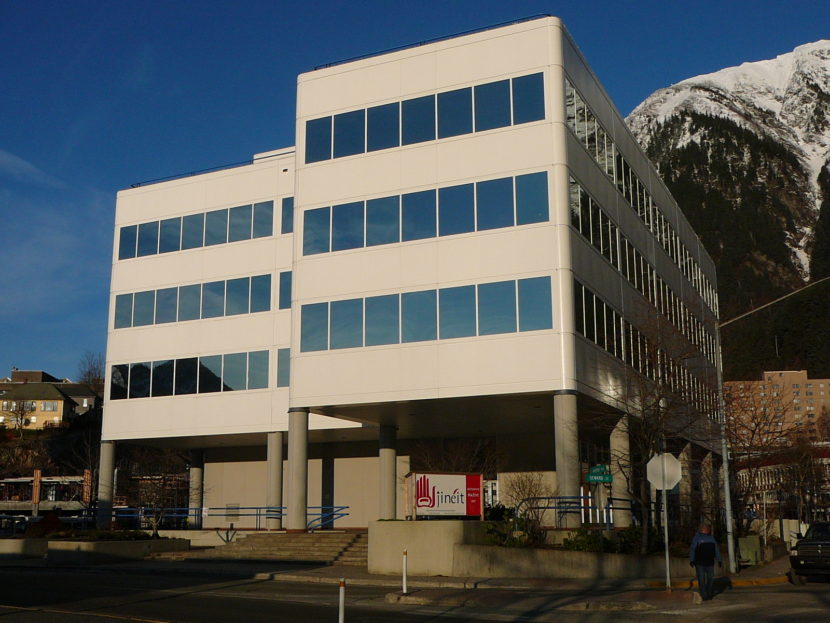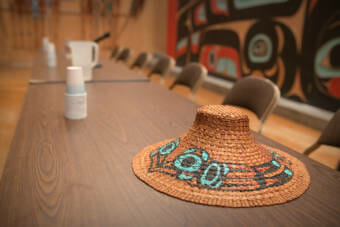
Congress set aside $8 billion for tribal entities across the country as part of the CARES Act but it took a U.S. Supreme Court ruling in June to free up some of those pandemic relief funds for Alaska Native Corporations.
Some of the village corporations got large payouts while Juneau-based Sealaska, the corporation with the most shareholders, got the least of the dozen regional corporations. Corporation executives say they’re still trying to understand the wide disparities in disbursements.
The Supreme Court ruling freed up nearly $450 million in federal pandemic relief. Corporations large and small had applied — some expecting to be able to offer some direct relief to shareholders.
Don Bremner, president of Yak-Tat Kwaan, Inc., said their allocation was around $164,000.
“So we thought, ‘My gosh, did we did we fill out the forms wrong? Maybe we missed something,’” he said from Yakutat where the village corporation serves around 500 shareholders.
Divvying up the federal aid would work out to about $300 each.
“So it wasn’t something to get excited about,” Bremner said. “That’s pretty much chump change.”
It was a similar story in Angoon. Melissa Kookesh chairs the board of Kootznoowoo, Inc. which has about 1,100 shareholders with ties to the Southeast village on Admiralty Island.
“Our corporation only received $168,625,” she said. “And it’s disturbing, especially when an urban corporation, just up the way from us receives over $11 million.”
She’s referring to Juneau’s Goldbelt, Inc. It received about $11.1 million allowing its board to distribute the cash to its 4,000-odd shareholders.

“We’re trying to push out as much as possible to shareholders to get their relief to get that money in their hands as quickly as possible,” said Goldbelt CEO McHugh Pierre.
The Juneau corporation is offering its shareholders up to $2,600 in direct assistance through the end of September. Then it’ll decide what to do with the rest of the cash.
“There’s enough for everybody,” Pierre added. “This isn’t a needs based system where you income qualify: If you can certify you had expenses and you’re a Goldbelt shareholder, we have enough money for everybody to receive relief.”
Juneau’s urban Native corporation has about four times as many shareholders as Angoon’s, yet it received more than 60 times as much federal pandemic relief.
A federal database that shows CARES Act payouts to Alaska Native Corporations suggests these disparities were common.
Staff at a number of Native corporations said they didn’t understand exactly how the formula worked. But corporations with more shareholders didn’t necessarily get more money.
Village corporations have been seeking an explanation from the Treasury Department.
But Nathan McCowan, chair of the Alaska Native Village Corporation Association, said they haven’t gotten a satisfying answer.
“They were translucent, but not transparent,” he said.
According to the Treasury one of the factors would be the number of employees the corporation and its subsidiaries have. McCowan said that seems to have affected many of the payouts.
“There does seem to be a strong correlation, in that the larger the operating base, the larger the number of employees, the greater amount of money that the corporation received,” McCowan said.
That might explain the case of Afognak Native Corporation. It received $19.2 million, or nearly $20,000 for each of its thousand-odd shareholders. It’s a relatively small village corporation with ancestral ties to the Kodiak Archipelago. But its revenues are more than $600 million dollars a year.
According to a statement from Afognak Native Corporation, executives don’t fully understand the formula used by the U.S. Treasury but are “very pleased to have received such a generous grant from the federal government to provide relief and response to the significant impacts of COVID on all of our stakeholders and community.”
It also helps explain why Juneau’s Goldbelt — which boasts more than two dozen subsidiaries — received more than twice as much of this federal relief as Sealaska, the ANCSA corporation with the most number shareholders overall.
In a statement directed at its 23,000 shareholders, Sealaska says it’s received questions from shareholders on how the disbursement was calculated.
“Sealaska is working out the details of how the $4.2 million allocation will be distributed to benefit our shareholders. We know this has been a difficult 18 months and that many are still struggling,” according to the statement. It also said corporations that provide housing-related services through a federal program were also given a leg up.
In contrast, Tatitlek Corporation, a village corporation with roots in Prince William Sound, received nearly $5 million — more than Sealaska — despite having fewer than 500 shareholders. No one from the corporation returned calls for comment.
The Native corporation to receive far and away the most CARES Act funds for tribal entities was CIRI, the regional corporation serving the Cook Inlet region including Anchorage, Kenai and the Mat-Su. It took in more than $111 million or roughly $12,000 per shareholder.
“I don’t know how Treasury made their calculations to determine the allocation,” said CIRI spokesperson Ethan Tyler.
But he said the regional corporation serves the most populous part of the state. It runs Southcentral Foundation which serves some 60,000 Alaska Natives and Native Americans which will allow it to put the funds to use beyond its direct shareholders, he added.
The three factors that Treasury seems to have taken into account, Tyler said, were tribal population, employment and increased expenditures of the corporation.
“But we were not provided a basis for the amount of funding that the Treasury allocated to anyone,” he said.
This CARES Act funds have strings attached. It has to be spent on pandemic-related expenses. And under current deadlines, CIRI has to spend its $111 million by the end of the year.
“And we’re actively seeking to extend that deadline,” Tyler said.
This month CIRI announced its shareholders can apply for assistance of up to $1,500 plus more for those with dependents.
That’s not something many other corporations will be able to offer their shareholders especially in rural Southeast Alaska.
“It’s just really challenging,” Kootznoowoo’s Melissa Kookesh said.
She said, if divided up, its disbursement would be less than $150 per shareholder.
“And that can’t even get you a plane ticket to Angoon,” she added.
Angoon doesn’t have an airport. All air service comes via seaplane that land on the water. That’s another project her village corporation is working on — trying to develop an airstrip for the island community.
Alaska Public Media’s Liz Ruskin in Anchorage contributed to this article.
Editor’s note: This story has been updated to correct a transcription error. The previous version included the term “income quality.” This has been changed to “income qualify.” The story has also been updated to reflect that there are now only 12 regional Native corporations, not 13.